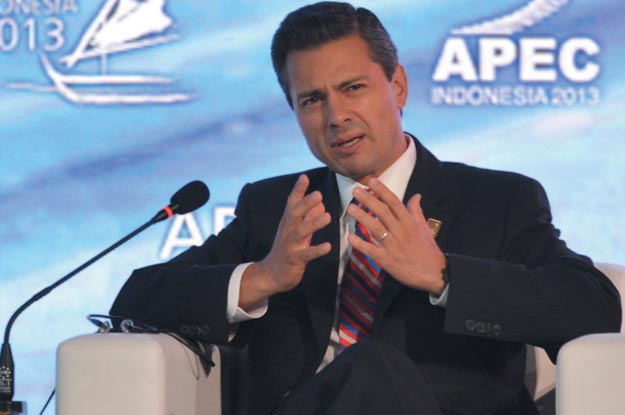Given the lack of progress on global trade talks in recent years, the future of international trade likely depends on regional initiatives. Mexico is well-placed to be a standard bearer. Over the past two decades it has become a major global trading power, boasting a network of free-trade agreements with 44 countries.
It is also now one of the world’s most open economies, in sharp contrast to the protectionist policies it pursued until the 1980s. Since the 1994 North American Free Trade Agreement (NAFTA), Mexico has become a member of the Asia-Pacific Economic Cooperation (APEC) and signed free-trade deals with the European Union, Japan, Israel, and several Latin American neighbors. More recently, Mexico cofounded the free-trading Pacific Alliance with Chile, Colombia and Peru, and joined negotiations for the Trans-Pacific Partnership (TPP).
Mexico’s evolution as a stalwart free trader and manufacturing powerhouse reflects both its geographic position—next to the world’s largest market—and its relative lack of reliance on commodities exports.
As it steadily moved up the manufacturing value chain, Mexico also pushed to diversify its trade partners and reduce its dependence on the U.S., which is still Mexico’s largest export destination.
The geopolitical implications of Mexico’s globalization are particularly interesting. It can identify as both North American and Latin American. With Atlantic and Pacific coastlines, it serves as a natural bridge between Europe and Asia. And while its long-term focus on North America will remain paramount, the Pacific Alliance is steering Mexico south.
Indeed, the decision to participate in the Pacific Alliance, the first major sub-regional trade bloc established since the creation of Mercosur in 1991, was a shrewd example of trade diplomacy: it provided an opportunity for Mexico to develop stronger links with South America, while also boosting its international clout.
A key difference between the Alliance and Mercosur is the Alliance’s explicitly outward orientation. It is not just a mechanism for integration, but also a platform for penetration of the Asia-Pacific market. Although the Alliance faces major obstacles, including poor infrastructure and the vast distances separating trade partners, it has attracted 42 official observer countries on six continents, including the major Asian economies. Just as Washington has “pivoted” to Asia, the Pacific Alliance countries—and Mexico in particular—have made a concerted effort to deepen ties across the Pacific.
Mexico’s embrace of free trade places it firmly in the camp of market-friendly, Pacific-facing economies of Latin America, in contrast to the statist, Atlantic-facing Mercosur bloc. Although Pacific Alliance leaders (especially Chilean President Michelle Bachelet) have denied they have a political agenda, many observers view the dynamism of the Pacific economies as a counterweight to Mercosur. That in turn might galvanize the Mercosur countries to expand their trade links beyond the region.
Meanwhile, Mexico is not shy about labeling this as a competition. “It would be a bold message to the world if we could demonstrate, especially compared to other agreements, that the Pacific Alliance will be swifter in expanding trade beyond its borders,” Mexican Secretary of Economy Ildefonso Guajardo Villarreal told the World Economic Forum in May.






